Abstract
When applied topically, trisodium phosphonoformate (PFA) displayed activity against established cutaneous herpesvirus infections in guinea pigs similar to that exhibited by the closely related phosphonoacetic acid (PAA); however, unlike PAA, PFA was not locally skin irritating. The therapeutic benefits of topical application of PFA were clearly evident when application was delayed for 48 h after virus inoculation, at which time lesions were well developed. The therapeutic effect was dependent on the concentration of PFA and the duration of treatment. PFA exhibited significant activity against established infections when administered intraperitoneally, although it was less effective via this systemic route than when applied topically.
Full text
PDF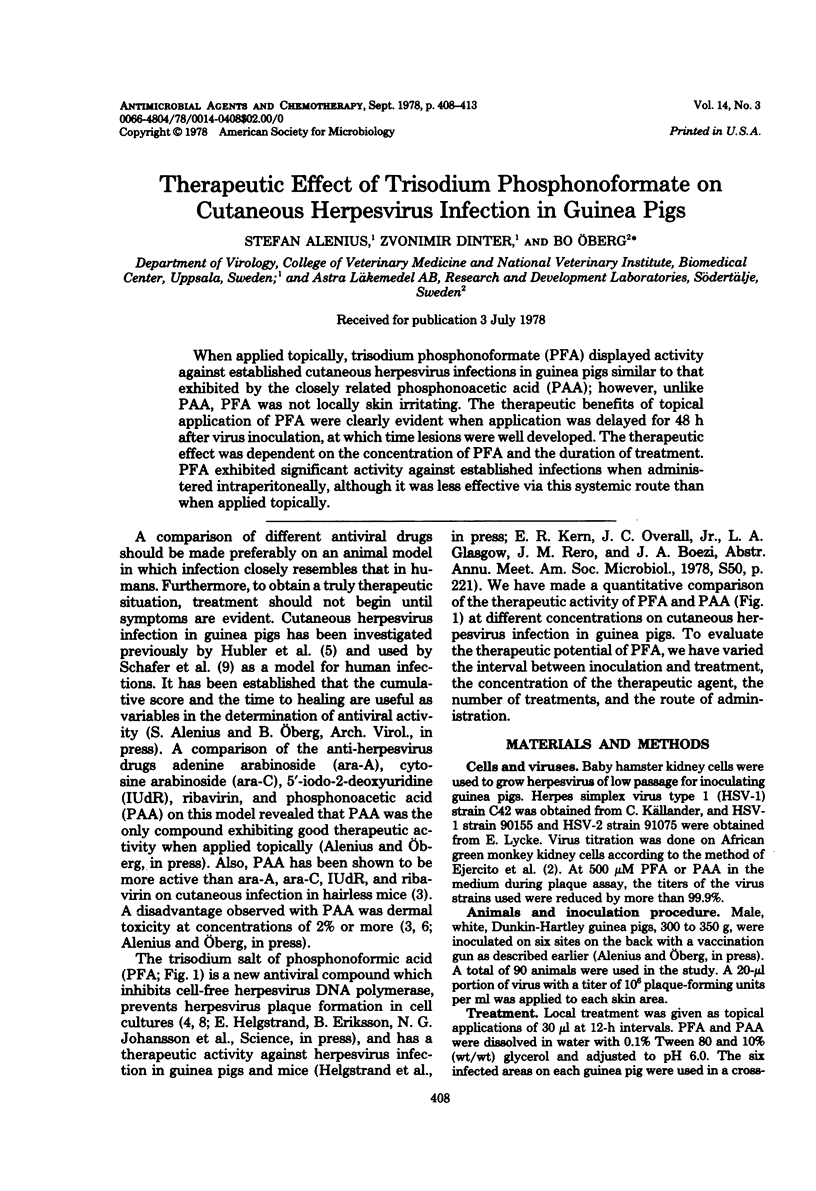
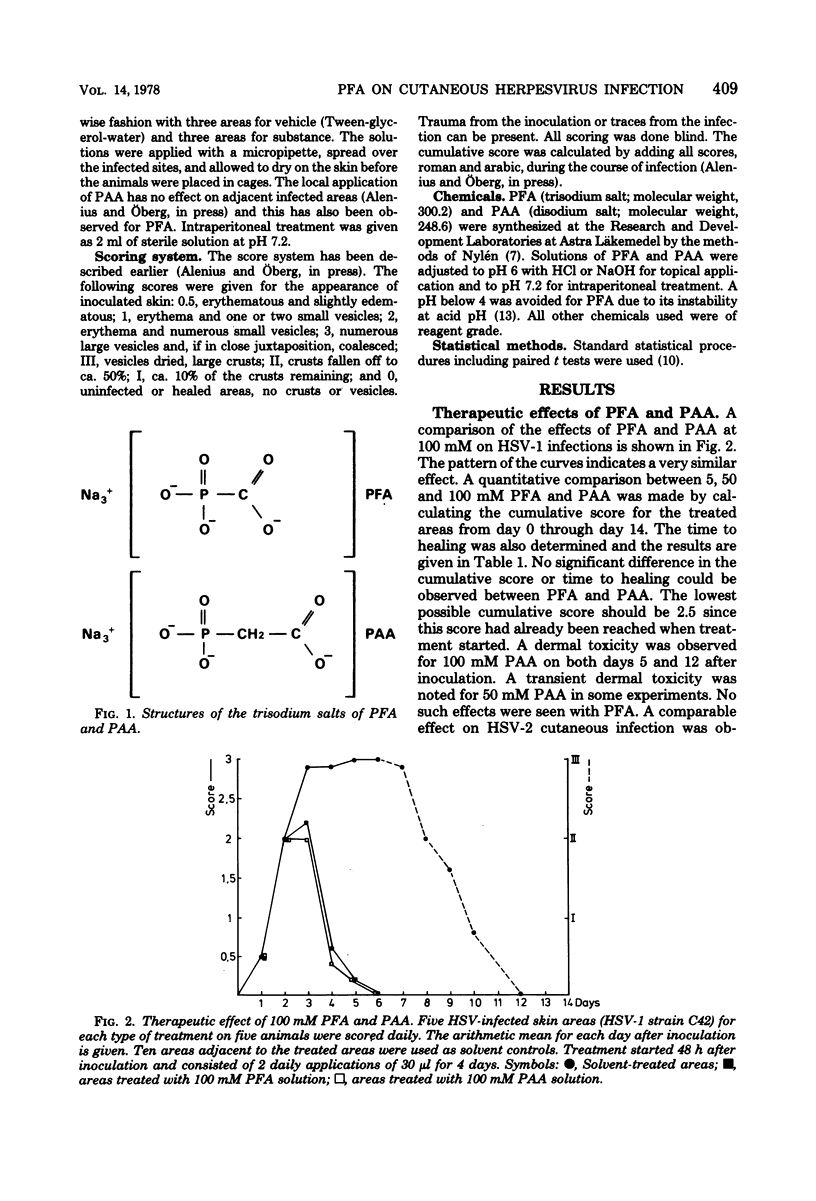
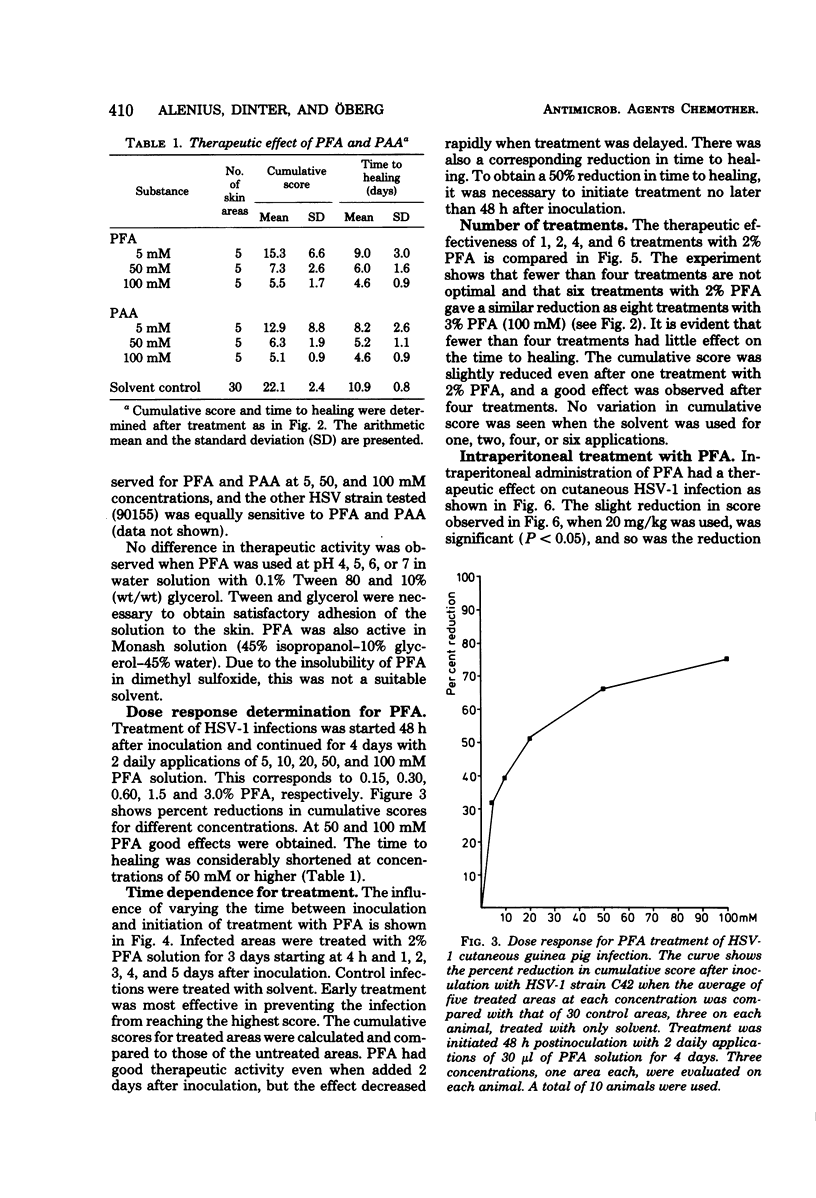
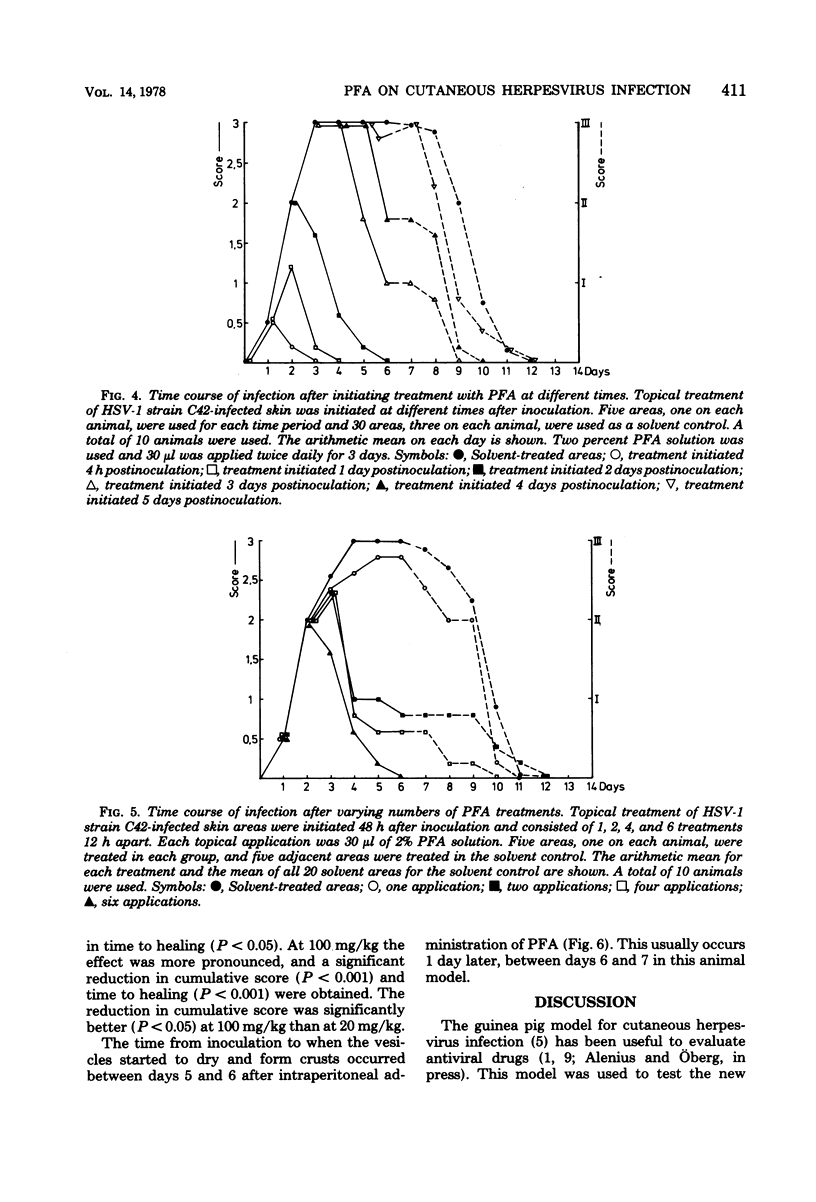
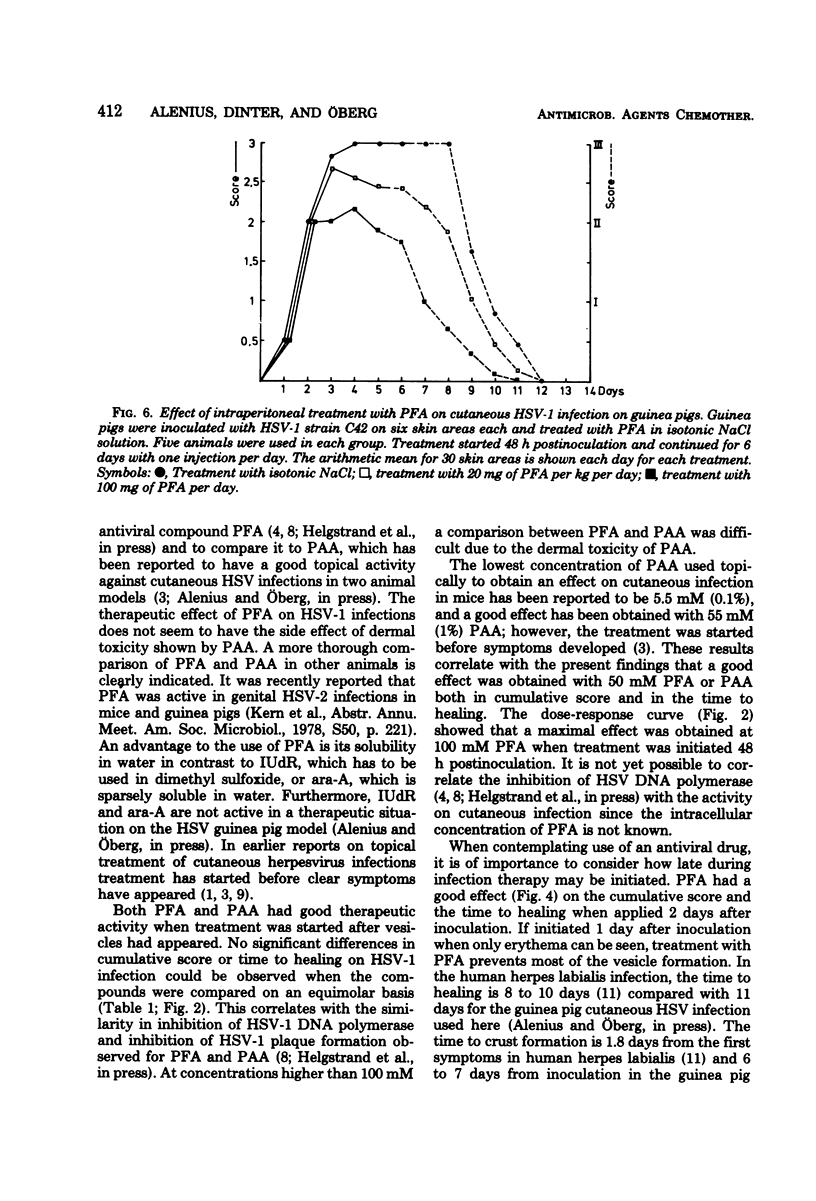
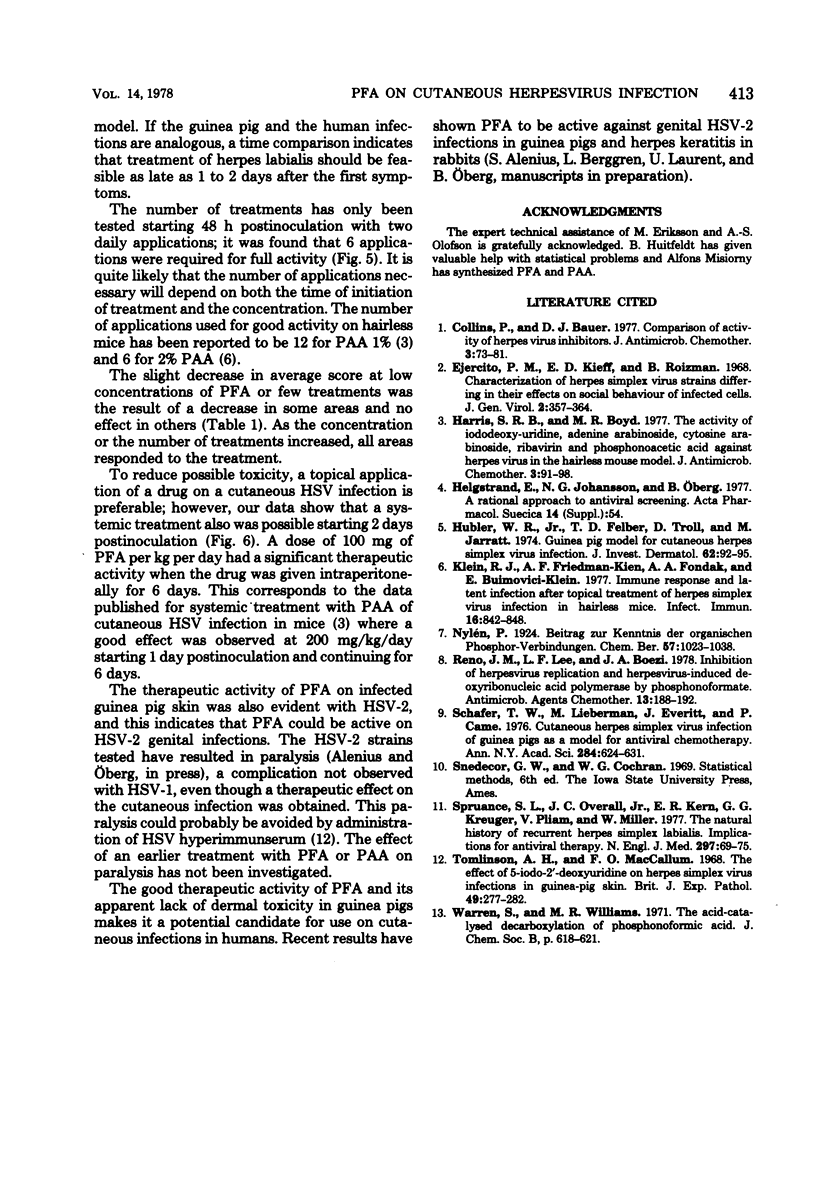
Selected References
These references are in PubMed. This may not be the complete list of references from this article.
- Collins P., Bauer D. J. Comparison of activity of herpes virus inhibitors. J Antimicrob Chemother. 1977 Mar;3 (Suppl A):73–81. doi: 10.1093/jac/3.suppl_a.73. [DOI] [PubMed] [Google Scholar]
- Ejercito P. M., Kieff E. D., Roizman B. Characterization of herpes simplex virus strains differing in their effects on social behaviour of infected cells. J Gen Virol. 1968 May;2(3):357–364. doi: 10.1099/0022-1317-2-3-357. [DOI] [PubMed] [Google Scholar]
- Harris S. R., Boyd M. R. The activity of iododeoxyuridine, adenine arabinoside, cytosine arabinoside, ribavirin and phosphonoacetic acid against herpes virus in the hairless mouse model. J Antimicrob Chemother. 1977 Mar;3 (Suppl A):91–98. doi: 10.1093/jac/3.suppl_a.91. [DOI] [PubMed] [Google Scholar]
- Hubler W. R., Jr, Felber T. D., Troll D., Jarratt M. Guinea pig model for cutaneous herpes simplex virus infection. J Invest Dermatol. 1974 Feb;62(2):92–95. doi: 10.1111/1523-1747.ep12692222. [DOI] [PubMed] [Google Scholar]
- Klein R. J., Friedman-Kien A. E., Fondak A. A., Buimovici-Klein E. Immune response and latent infection after topical treatment of herpes simplex virus infection in hairless mice. Infect Immun. 1977 Jun;16(3):842–848. doi: 10.1128/iai.16.3.842-848.1977. [DOI] [PMC free article] [PubMed] [Google Scholar]
- Reno J. M., Lee L. F., Boezi J. A. Inhibition of herpesvirus replication and herpesvirus-induced deoxyribonucleic acid polymerase by phosphonoformate. Antimicrob Agents Chemother. 1978 Feb;13(2):188–192. doi: 10.1128/aac.13.2.188. [DOI] [PMC free article] [PubMed] [Google Scholar]
- Schafer T. W., Lieberman M., Everitt J., Came P. Cutaneous herpes simplex virus infection of guinea pigs as a model for antiviral chemotherapy. Ann N Y Acad Sci. 1977 Mar 4;284:624–631. doi: 10.1111/j.1749-6632.1977.tb21996.x. [DOI] [PubMed] [Google Scholar]
- Spruance S. L., Overall J. C., Jr, Kern E. R., Krueger G. G., Pliam V., Miller W. The natural history of recurrent herpes simplex labialis: implications for antiviral therapy. N Engl J Med. 1977 Jul 14;297(2):69–75. doi: 10.1056/NEJM197707142970201. [DOI] [PubMed] [Google Scholar]
- Tomlinson A. H., Maccallum F. O. The effect of 5-iodo-2'-deoxyuridine on herpes simplex virus infections in guinea-pig skin. Br J Exp Pathol. 1968 Jun;49(3):277–282. [PMC free article] [PubMed] [Google Scholar]


